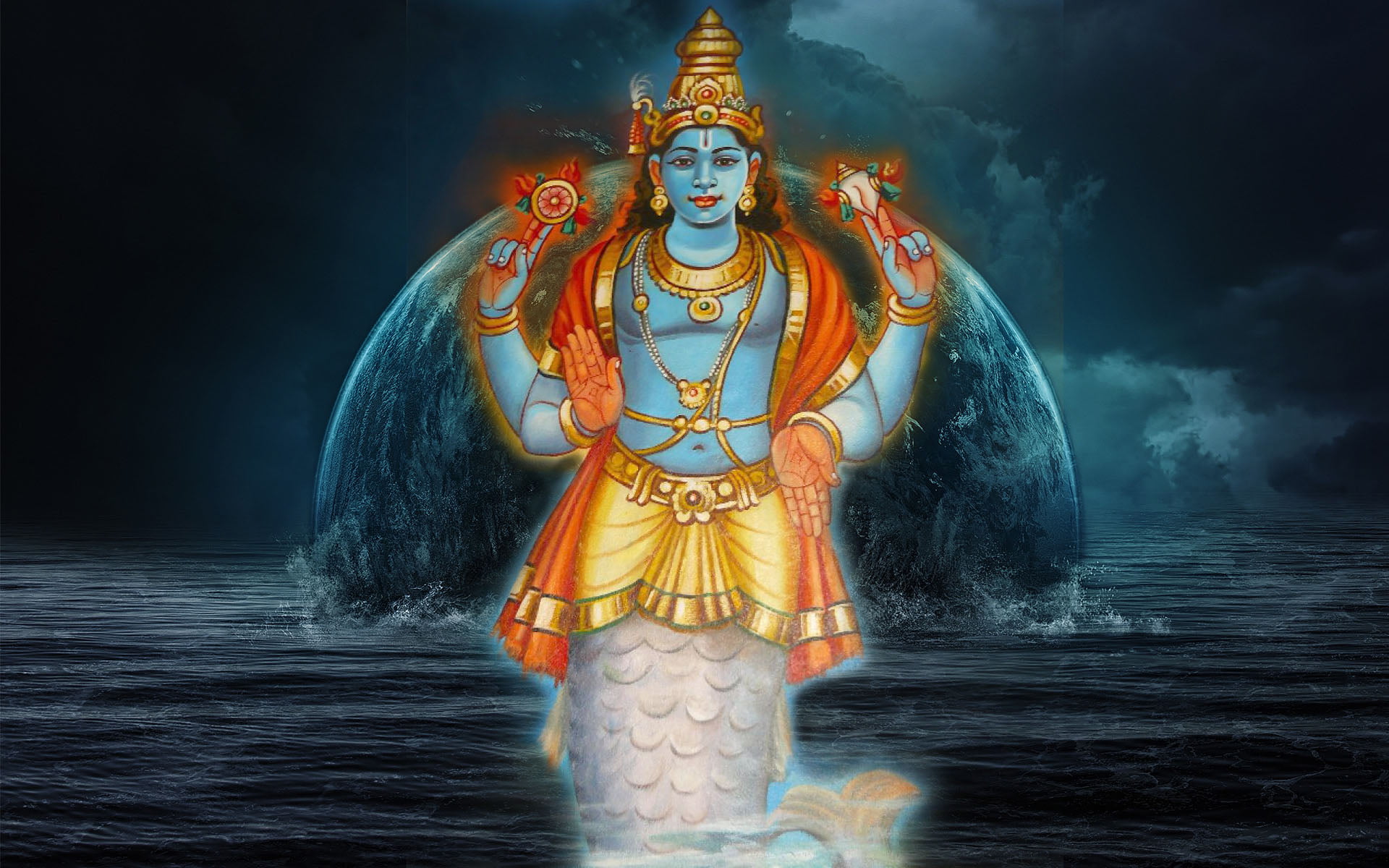
“Matsya” is a term in Sanskrit that translates to “fish,” and it is also the name of the first avatar (incarnation) of the Hindu god Vishnu in Hindu mythology. The story of Matsya is primarily found in the Puranas, especially the Matsya Purana.
The Matsya Avatar is associated with the mythological account of the great flood. The basic narrative is as follows:
- Origin of Matsya Avatar: The story begins with the demon Hayagriva stealing the Vedas (sacred scriptures) and hiding in the cosmic ocean. To retrieve the Vedas and protect knowledge, Lord Brahma requested Vishnu’s help. Vishnu then assumed the form of Matsya, a fish.
- Rescuing the Vedas: As a fish, Matsya grew in size and power. He saved the sage Manu, the progenitor of humanity, by guiding his boat during a catastrophic deluge. Manu, along with the seven great sages (Saptarishi), was instructed by Matsya to tie the boat to the fish’s horn using a massive serpent.
- Restoring the Vedas: Matsya then fought and defeated the demon Hayagriva, retrieving the stolen Vedas. In some versions of the story, Matsya also imparts spiritual wisdom to Manu, providing him with knowledge about dharma (righteousness) and the nature of reality.
The Matsya Avatar is symbolic on multiple levels. It represents the preservation of knowledge, the protection of dharma, and the cyclical nature of existence (as seen in the concept of avatars in Hinduism). The image of Matsya is often depicted as a giant fish with a horn, carrying the sages and the Vedas.
The story of Matsya is just one among the many fascinating narratives found in Hindu mythology, illustrating important moral and philosophical lessons while also serving as a source of cultural and religious inspiration for followers of Hinduism.
